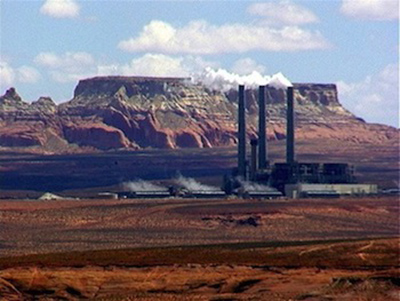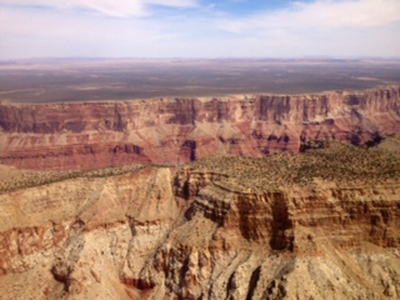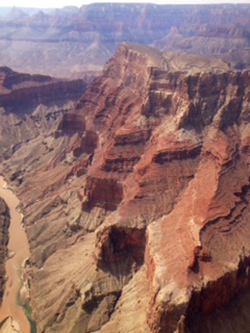
Efforts underway to clean Grand Canyon air
The Navajo Generating Station emissions continue to pollute the Grand Canyon air.
Grand Canyon National Park is the one of the most affected. Its main South Rim Village Visitor Center is located just 70 miles by air to the west of the coal-fired power plant, located in Page, Ariz.
| Click on the video at the right to view an audio slide show about activities and attractions at Grand Canyon National Park that is narrated by writer Ana Carolina Plata. |
Every day the Navajo Generating Station runs without new pollution controls. The lack of regulations continues to degrade the air quality at 10 protected national parks and wilderness areas, being the Grand Canyon one of the most affected.
“My organization serves as an advocate for our country’s national parks, so we have been very vocal and active in supporting this commitment to clean the air at Grand Canyon,” said Kevin Dahl, Arizona Program Manager for the National Parks Conservation Association.
 |
The Navajo Generating Station at Page, Ariz. (Photo courtesy of National Park Service). |
The nitrogen oxide from the plant pollutes the air making it harder to see the world-famous landscapes. A National Park Service bulletin said that the smog is thickest in the valleys where it originates, but it spreads throughout the Grand Canyon region Consequently, leading to serious human health issues for visitors, workers and local residents.
“These protections will limit dangerous emissions that pollute skies over Arizona’s pristine national parks, including Grand Canyon and Petrified Forest, better protecting public health and saving Arizonans millions in health costs,” Sierra Club Grand Canyon Chapter Director Sandy Bahr said in a statement to the Arizona state legislature.
Recently, the NPCA has sued the U.S. Environmental Protection Agency (EPA) to force it to establish a timeline for when it would rule what the Best Available Retrofit Technology (BART) requirement is for nitrogen oxide cleanup at Navajo Generating Station.
| At right and below, aerial views of Grand Canyon National Park, located west of the Navajo Generating Station (Photos courtesy of Andres Landa). |  |
In January, the EPA published its proposal, but it unfortunately opens the door for this plant to continue polluting without additional emission reduction for the next 10 years. The EPA says that this additional time is acceptable because the plant is on Navajo land.
“Fading away… Good, fair, and poor visibility from the South Rim of Grand Canyon National Park,” a National Park Service bulletin said.
The NPCA has alerted and encouraged its members and supporters to comment on the plan through its website. The NPCA is preparing to submit an expert testimony during the comment process and will testify at upcoming hearings.
 “I enjoyed the splendor of nature and the wonder of seeing how the world has changed in time,” said Andres Landa, on his visit to the Grand Canyon in April.
“I enjoyed the splendor of nature and the wonder of seeing how the world has changed in time,” said Andres Landa, on his visit to the Grand Canyon in April.
Dahl considers that it is important to solve this issue because when the Clean Air Act and its amendments were passed in the 1970s there was a vision and commitment to clean the air to the original levels in certain special areas of our country.
Through the years this vision has been forgotten. The process needs to reestablish the regular reviews and the requirement that major polluters in the region use “best available retrofit technology” so that this goal can eventually be reached.
This is not the first time air pollution has become an issue to national parks. The World Health Organization has shown that in the U.S., air pollution annually kills nearly twice as many people as traffic accidents do.
One example is the Great Smoky Mountains National Park whose elevated levels of nitrogen and sulfur in the air are deposited into the park’s system; consequently, raising the acidification of streams and soils.
This, then, affects the forest health and fish populations in the park. Another example is the visibility issue in the Skyline Drive and Appalachian Trail at the Shenandoah National Park. Visitors used to see up to seven miles on a clear day, now, it has minimized to one mile. The haze seems to affect national parks that have more mountains.
The Navajo Generating Stations is a 2250 megawatt coal-fired power plant that has become one of the top 10 sources of nitrogen oxide emission in the country.
The NGS is the eighth largest coal-fired power plant in the nation and is the largest on the Colorado Plateau. NGS is one of the top 10 sources of nitrogen oxide emissions in the country. It became operational between 1974 and 1976.

Comments are Closed